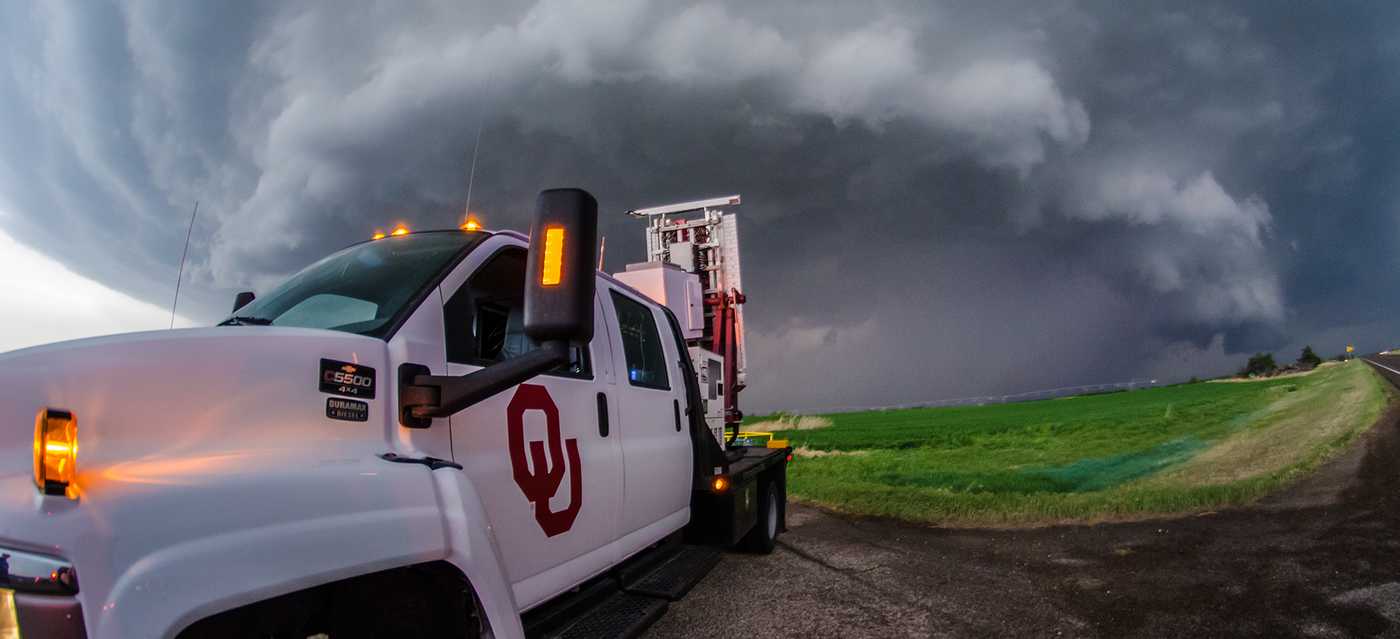AIR
Atmospheric Imaging Radar (Retired 2019)
 The AIR is a rapid-scanning tornado scale radar platform built completely by OU students, faculty, and
staff. It allows for unique student opportunities, including high-temporal convective storm analysis,
imaging techniques, and beamforming studies.
The AIR is a rapid-scanning tornado scale radar platform built completely by OU students, faculty, and
staff. It allows for unique student opportunities, including high-temporal convective storm analysis,
imaging techniques, and beamforming studies.
System Overview
The AIR was the first radar platform completely designed and constructed by ARRC students, faculty, and staff. Advanced digital beamforming techniques allow for the transmission of a vertical fan beam 20 degrees in elevation, which can be resolved into individual receive beams using an antenna array. Using this method, known as "imaging," the AIR is capable of scanning a 90 degree by 20 degree sector in as little as 5 seconds. The AIR is currently used as a tornado scale radar system in order to detect and analyze subtle changes in the evolution of supercell thunderstorms and tornadoes. The entire volume of a tornado and its parent storm can be scanned in under 10 seconds, which is roughly three times the temporal resolution of any other tornado scale radar in the world, and nearly 30 times as fast as traditional dish platforms. In addition to severe weather observations, the AIR is capable of providing a research platform for general beamforming and imaging techniques, as well as other advanced signal processing methods studied by ARRC students, faculty, and staff.System characteristics
- 3.5 kW peak power using traveling wave tube amplifier
-
Operation frequency is 9550 MHz (X-band)
- Wavelength: 3.14 cm
- Pulse Length: 1-15 µsec
- Pulse Repetition Frequency: 1-2000 Hz
- Maximum Duty Cycle: 2%
- Maximum Pulse Bandwidth: 5 MHz
- Fan Beam Transmit Horn
- Vertical 3-dB Beamwidth: 20.0°
- Horizontal 3-dB Beamwidth: 1.0°
- Gain: 28.5 dBi
- 36 Channel Receive Array
- Infinite number of 1.0° vertical beams
- Fourier, Capon, Robust Capon, and other advanced adaptive beamforming techniques are possible
- Array Aperture: 1.2 x 1.8 m
- Sampling Rate: 40 MHz
- Rotation Rate: Up to 20.0° sec-1
- Rotation Angle: -80.0° to +100.0° (180.0° by 20.0° coverage)
- Sensitivity
- Better than 10 dBZ at 10 km
- Sensitivity Gain with Pulse Compression: Approximately 10 dB
- Range Resolution
- 150 m (Short Pulse)
- 30 m (With Pulse Compression)
- Polarization: Horizontal